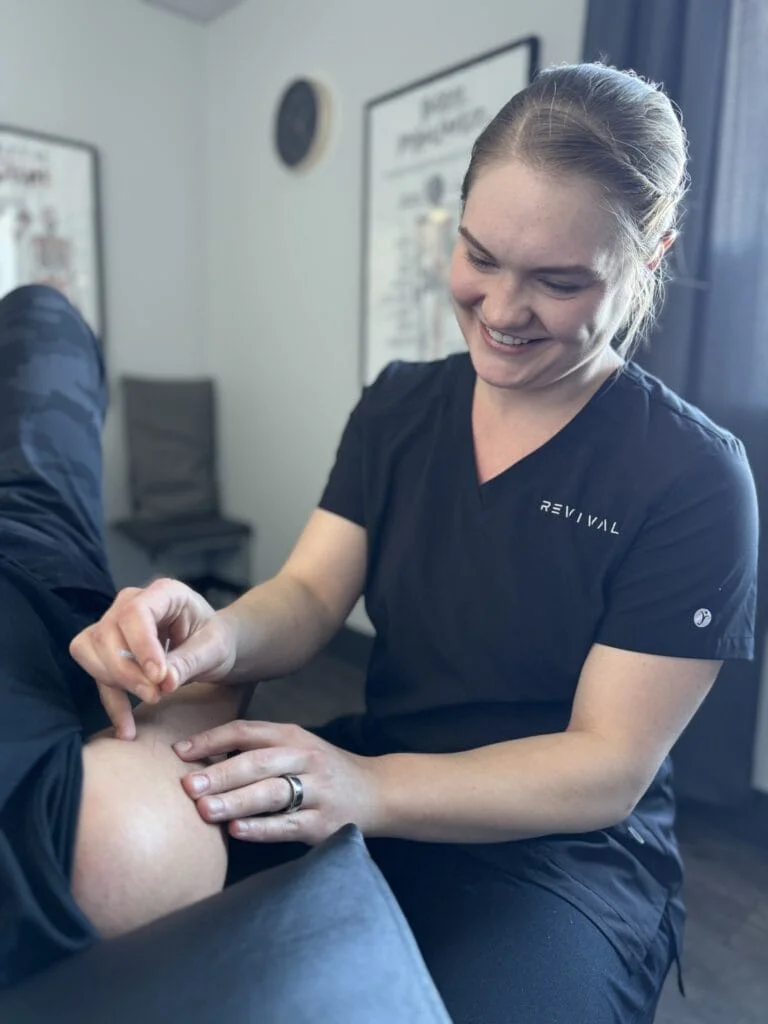Common symptoms of Celiac Disease include:
Gastrointestinal Issues:
- Diarrhea
- Bloating and gas
- Abdominal pain
- Constipation
Malabsorption Symptoms:
- Weight loss
- Fatigue
- Anemia (due to iron deficiency)
- Nutrient deficiencies (such as vitamin D and B12)
Neurological Issues:
- Headaches
- Brain fog
- Nerve damage
Musculoskeletal Symptoms:
- Joint pain
- Muscle cramps
Dermatological Symptoms:
- Dermatitis herpetiformis (itchy, blistering skin rash)
- Acne
Other Systemic Symptoms:
- Mood swings
- Depression and anxiety
- Missed menstrual periods
- Infertility or recurrent miscarriage
In Children:
- Failure to thrive
- Delayed growth and puberty
- Behavioral issues
What is Celiac Disease?
If you are celiac, gluten (a protein found in wheat, barley, and rye) triggers the cells of your immune system to attack the villi in your intestinal lining. Villi are responsible for absorbing nutrients from food, so when they are damaged, food is not absorbed but is fermented in the colon, which can lead to bloating, diahhrea, and nutrient deficiencies.
Gastrointestinal issues like diarrhea and bloating, as well as fatigue, headaches, and skin rashes. Many individuals experience symptoms that are less directly linked to the digestive system, such as joint pain, mood swings, and cognitive impairment. The range of symptoms associated with celiac disease can make it challenging to diagnose, so let’s take a closer look at the process!
Common Misconceptions About Celiac Disease
Just cut out gluten!
A gluten allergy always results in a strong reaction.
If you’re asymptomatic, nothing is happening internally.
Just take a pill!
Diagnosing Celiac Disease
Recognizing symptoms early and undergoing appropriate testing are crucial steps in managing these conditions. For celiac disease, this typically involves serology testing (blood screening) to look for the presence of antibodies in your blood. This will suggest whether or not you may have celiac disease. If the testing is positive, it will need to be confirmed with an endoscopy and biopsy of your small intestine.
Understanding False Negatives in Celiac Disease Testing:
- Serological Tests: These are blood tests that look for antibodies typically present in the blood when someone has celiac disease. The most common tests include tTG-IgA (tissue transglutaminase IgA) and EMA (endomysial antibodies). False negatives can occur if:
- IgA Deficiency: Some people are deficient in IgA (a type of antibody), which can lead to negative tTG-IgA results despite having celiac disease.
- Diet: If individuals have been on a gluten-free diet prior to testing, the tests may not detect antibodies, resulting in a false negative.
- Genetic Testing: This tests for HLA-DQ2 and HLA-DQ8 genetic markers, which are found in almost all people with celiac disease. While their absence can almost rule out celiac disease, their presence alone does not confirm the diagnosis, as these genes are also present in about 30-40% of the general population.
- Endoscopic Biopsy: This is considered the gold standard for diagnosing celiac disease. A biopsy of the small intestine is taken and examined for damage caused by the immune response to gluten. False negatives can still occur if:
- Patchiness of Intestinal Damage: The damage to the small intestine can be patchy, and if the biopsy samples are taken from unaffected areas, it might not show signs of the disease.
- Quality of the Sample and Interpretation: The diagnostic accuracy also depends on the quality of the samples and the pathologist’s expertise in recognizing the characteristic changes of celiac disease.
Steps to Diagnosis Despite False Negatives:
- Continue a Gluten-Containing Diet: For accurate testing, individuals should continue consuming a diet containing gluten (roughly 2 slices of bread per day) for at least 6 weeks before testing.
- Repeat Serology and Genetic Tests: If initial tests are negative but symptoms persist, repeating the serology tests and confirming through genetic testing can be useful.
- Pursue an Endoscopic Biopsy: If serological tests suggest celiac disease or if symptoms strongly suggest celiac disease despite negative serological tests, an endoscopic biopsy should be considered.
- Follow-Up and Response to Diet: In some cases, a clinical response to a gluten-free diet may also support the diagnosis, especially in the context of negative testing but high clinical suspicion.
- Consult a Specialist: Consulting with a gastroenterologist or a celiac disease specialist can provide guidance tailored to individual cases, particularly when test results and symptoms do not align.
Treating Celiac Disease
Currently there is no” cure” for celiac disease, but it can be managed by cutting gluten out of your diet entirely in addition to rebuilding your gut health and supporting your nervous system . You may still experience symptoms after your diagnosis and removal of gluten from your diet. Track your experience carefully and consult with your physician. Depending on how long you have been exposed to gluten, and how long you have removed it, you could still experience symptoms for a number of weeks. Remember: healing takes time! If symptoms persist, you may want to consider gut microbiome testing and further testing for other autoimmune diseases.
Non-celiac Gluten Sensitivity (NCGS)
What is NCGS?
Non-celiac gluten sensitivity (NCGS) is when people experience symptoms in response to gluten, but do not have an inflammatory, autoimmune response. Although it doesn’t result in intestinal damage, it can still be incredibly painful and uncomfortable. Common symptoms for NCGS include, but are not limited to, eczema, itchy blisters, and bloating. The symptoms can appear similar to celiac disease but the testing is more subjective, often involving an elimination diet, followed by the reintroduction of gluten to see if symptoms reappear.
Beyond Gluten-Free
While eliminating gluten from the diet is the cornerstone of treatment for both celiac disease and gluten sensitivity, at Revival Airdrie, we recognize that true management extends far beyond diet alone:
- Gut Health: A healthy gut is essential for overall wellness. Our approach includes probiotics and other gut-healing supplements to restore intestinal integrity and function.
- Rebalancing the Nervous System: Chronic conditions like celiac and gluten sensitivity can stress the nervous system. We use techniques such as chiropractic care and acupuncture to help rebalance and restore nervous system function, reducing systemic inflammation and improving overall health.
- Inflammation Reduction: Inflammation is a common feature of autoimmune disorders. Along with dietary adjustments, we focus on holistic therapies that help reduce inflammation and alleviate pain, enhancing the body’s natural healing processes.

At Revival, we understand that managing chronic conditions like celiac disease involves more than just dietary changes—it requires a holistic approach to your overall health. This is why we emphasize comprehensive testing as a crucial step in optimizing your health. Our tailored approach helps in identifying other factors contributing to your symptoms, ensuring that we address not just the manifestations of your condition, but its root causes as well.
Best Practices for Healing
- Stay strict to your gluten-free diet by identifying common foods with hidden gluten.
- Develop a healthy relationship with food. Work with a dietitian and identify any disordered eating habits or eating disorders. If you are afraid of food it will be hard to use food to help you heal.
- Get enough calories! Your body needs the energy to heal. Prioritize nutrient quality and quantity.
- Identify nutrient deficiencies with a blood test and correct them using whole foods.
- Prioritize your sleep. This is when your body does the majority of its healing.
- Sweat/exercise. This is crucial to help your body process and prevent stagnant inflammation and grow stronger.
- Create a healing environment. This could include incorporating hands-on treatment that can target your nervous system and even the organ through techniques like craniosacral therapy and visceral manipulation. Technologies like high-powered PEMF is a game changer for many clients who continue to experience bloating, pain and brain fog even after going gluten free.
- Ask for help. Going gluten free can be a big change and increased stress can lead to more symptoms. Your mental health is just as important as your physical health for healing.
Remember, managing these conditions is a journey – there is no quick fix. Whether it’s through diet, changes to your lifestyle, or clinical interventions, every step you take is a step towards

INFLAMMATION & DIGESTION BALANCING starts with an assessment. We recommend booking an Initial Assessment with our Chinese Medicine Doctor, Dr. Sharon or our Athletic Therapist, Carly. Regardless of who you see at Revival, you will be taken care of. We work as a team and will evaluate the factors contributing to your pain, provide hands on treatment and create a plan to get you feeling your best.

